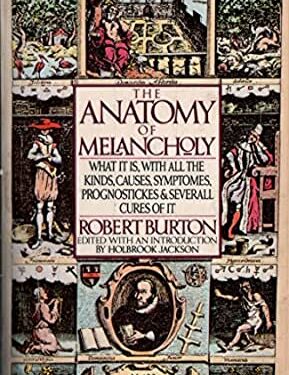The Anatomy of Melancholy is a comprehensive and complex work written by Robert Burton, first published in 1621. It is a sprawling examination of melancholy, a term that encompasses a range of mental and emotional conditions, including depression and anxiety. The book is divided into three major sections and numerous subsections, presenting a vast array of information, theories, and anecdotes on the subject.
The Anatomy of Melancholy Essay By Robert Burton-The structure of The Anatomy of Melancholy follows a systematic approach. Burton begins with a detailed analysis of the causes and symptoms of melancholy, exploring various physiological, psychological, and environmental factors that may contribute to the condition. He delves into topics such as heredity, diet, climate, and social influences, discussing how each of these elements can influence a person’s mental state.
Also Read-
- On Some Verses of Virgil Essay Summary By Michel de Montaigne
- Against Joie de Vivre Essay Summary By Phillip Lopate
- The Little Store Essay Summary By Eudora Welty
- The Search for Marvin Gardens Essay Summary By John McPhee
The second section of the book focuses on the different types of melancholy, categorizing them based on their specific characteristics. Burton classifies melancholy according to its source, including religious, romantic, and intellectual melancholy, among others. He provides in-depth descriptions of each type, citing examples from history, literature, and mythology to illustrate his points.
The Anatomy of Melancholy Essay By Robert Burton-In the third section, Burton delves into the treatment and remedies for melancholy. He explores various therapeutic approaches, including physical exercise, diet, music, and intellectual pursuits. He also discusses the role of religion, philosophy, and humor in managing melancholy, offering a range of advice and recommendations for individuals struggling with the condition.
Throughout The Anatomy of Melancholy, Burton demonstrates a vast knowledge of classical and contemporary literature, history, philosophy, and science. He frequently quotes and references a wide array of authors, incorporating their thoughts and ideas into his own analysis. The book combines scholarly research with personal observations and reflections, making it a unique blend of academic study and subjective exploration.
The Anatomy of Melancholy Essay By Robert Burton-While The Anatomy of Melancholy is primarily concerned with the understanding and treatment of melancholy, it also touches upon broader themes related to human nature, the complexities of the mind, and the pursuit of happiness. Burton’s writing style is often digressive and whimsical, incorporating wit, humor, and clever wordplay.
Overall, The Anatomy of Melancholy is a highly influential work that offers a comprehensive examination of melancholy in all its forms. It remains a significant contribution to the fields of psychology, philosophy, and literature, providing valuable insights into the human condition and the challenges of mental health.
About Robert Burton
Robert Burton, an English scholar and clergyman, is best known for his influential work “The Anatomy of Melancholy.” Born on February 8, 1577, in Lindley, Leicestershire, England, Burton’s magnum opus explores the causes, symptoms, and potential cures for melancholy, a term used in the 17th century to describe a range of mental and emotional conditions.
The Anatomy of Melancholy Essay By Robert Burton-Despite his significant contributions to literature and medicine, much of Burton’s life remains shrouded in mystery. This article delves into the life and work of Robert Burton, shedding light on his notable achievements and the enduring legacy of “The Anatomy of Melancholy.”
Robert Burton was born into a wealthy and educated family. His father, Ralph Burton, was the rector of Seagrave in Leicestershire, and his mother, Dorothy Harington, came from a prominent gentry family. As a child, Burton received an excellent education, studying at the Grammar School in Sutton Coldfield before enrolling at Brasenose College, Oxford, in 1593.
The Anatomy of Melancholy Essay By Robert Burton-At Oxford, he displayed exceptional intellectual abilities, earning his bachelor’s degree in 1597 and his master’s degree in 1602. Subsequently, he was elected a student of Christ Church, one of the prestigious colleges at Oxford University.
The Anatomy of Melancholy Essay By Robert Burton-Burton’s scholarly pursuits continued at Oxford, where he immersed himself in a wide range of subjects, including philosophy, theology, and medicine. He developed a particular interest in the study of melancholy, an ailment that fascinated many intellectuals of the time.
In 1605, he published a small volume titled “Democritus Junior to the Reader,” a precursor to his later work, “The Anatomy of Melancholy.” This introductory text hinted at the comprehensive exploration of melancholy that was to come.
The Anatomy of Melancholy Essay By Robert Burton-“The Anatomy of Melancholy” was first published in 1621 under the pseudonym Democritus Junior, a reference to the ancient Greek philosopher Democritus, known for his theory of atoms and his connection to melancholy.
The book, subtitled “What it is, with all the Kinds, Causes, Symptomes, Prognostickes, and Severall Cures of it,” consists of an extensive analysis of melancholy, drawing upon a vast array of sources, including medical texts, philosophical treatises, and literary works. Burton’s writing style is characterized by erudition, wit, and digressions, making the book both informative and entertaining.
“The Anatomy of Melancholy” is structured as a labyrinthine exploration of melancholy, with Burton leading the reader through various aspects of the condition. The book is divided into three major sections: “Partitions,” “Sections,” and “Members.” In the “Partitions,” Burton presents a classification of melancholy based on its causes and manifestations. The “Sections” delve deeper into specific topics related to melancholy, such as love, religion, and education. Finally, the “Members” provide a detailed examination of the physical and mental symptoms of melancholy.
The Anatomy of Melancholy Essay By Robert Burton-One of the remarkable aspects of Burton’s work is his inclusive approach to the subject. He acknowledges that melancholy affects individuals from all walks of life, ranging from the intellectual elite to the common folk. By incorporating anecdotes, case studies, and literary references, Burton provides a comprehensive and empathetic understanding of the human experience of melancholy.
Although “The Anatomy of Melancholy” was widely recognized as a seminal work during Burton’s lifetime, its popularity dwindled in the following centuries.
Conclusion
The Anatomy of Melancholy is a monumental work that explores the multifaceted nature of melancholy and its impact on the human psyche. Robert Burton’s exhaustive examination of the causes, symptoms, types, and treatment of melancholy offers a comprehensive understanding of this complex mental and emotional condition.
The Anatomy of Melancholy Essay By Robert Burton-Burton’s work goes beyond a mere medical or psychological analysis of melancholy. It delves into the realms of literature, history, philosophy, and religion, drawing upon a vast array of sources to support his arguments and provide a rich context for his exploration. The book’s extensive references to classical texts, myths, and historical figures demonstrate Burton’s erudition and contribute to the depth and breadth of his analysis.
The Anatomy of Melancholy Essay By Robert Burton-One of the notable strengths of The Anatomy of Melancholy is its meticulous categorization of melancholy into different types, each with its unique characteristics and manifestations. This classification allows for a more nuanced understanding of the condition, recognizing that melancholy can stem from various sources and affect individuals in different ways.
Furthermore, Burton’s emphasis on treatment and remedies for melancholy reflects his compassionate approach. He not only offers practical suggestions such as exercise, diet, and music but also highlights the importance of intellectual stimulation, religious faith, and a sense of humor in managing and alleviating melancholy. This holistic approach underscores Burton’s recognition of the interconnectedness of mind, body, and spirit in matters of mental health.
The Anatomy of Melancholy’s enduring relevance lies in its ability to transcend the specific historical context in which it was written. Despite being published over four centuries ago, many of the insights and observations presented by Burton still resonate with contemporary readers. The book serves as a testament to the enduring human struggle with melancholy and provides valuable perspectives on mental health that remain pertinent today.
In summary, The Anatomy of Melancholy is a monumental and influential work that offers a comprehensive exploration of melancholy. Its detailed analysis, wide-ranging references, and compassionate approach contribute to its enduring significance. The book continues to be a valuable resource for scholars, clinicians, and individuals seeking to understand and navigate the complexities of mental and emotional well-being.
FAQ.
Q1: Who is the author of “The Anatomy of Melancholy”?
Ans. The author of “The Anatomy of Melancholy” is Robert Burton. He was an English scholar and writer who lived from 1577 to 1640.
Q2: When was “The Anatomy of Melancholy” published?
Ans. The first edition of “The Anatomy of Melancholy” was published in 1621. Burton later revised and expanded the work, with subsequent editions being released in 1624, 1628, and 1632.
Q3: What is the book about?
Ans. “The Anatomy of Melancholy” is a comprehensive exploration of melancholy, a term that encompasses a range of mental and emotional conditions, such as depression and anxiety. The book analyzes the causes, symptoms, types, and treatment of melancholy, drawing upon various disciplines like psychology, philosophy, literature, and history.
Q4: Is “The Anatomy of Melancholy” still relevant today?
Ans. Yes, despite being written centuries ago, “The Anatomy of Melancholy” remains relevant today. Its insights into the human condition, mental health, and the complexities of melancholy are still valued by scholars, clinicians, and those interested in understanding and addressing mental and emotional well-being.
Q5: What is the structure of the book?
Ans. “The Anatomy of Melancholy” is divided into three major sections. The first section examines the causes and symptoms of melancholy. The second section categorizes melancholy into different types based on their characteristics. The third section discusses treatment and remedies for melancholy, including physical, intellectual, and spiritual approaches.

















